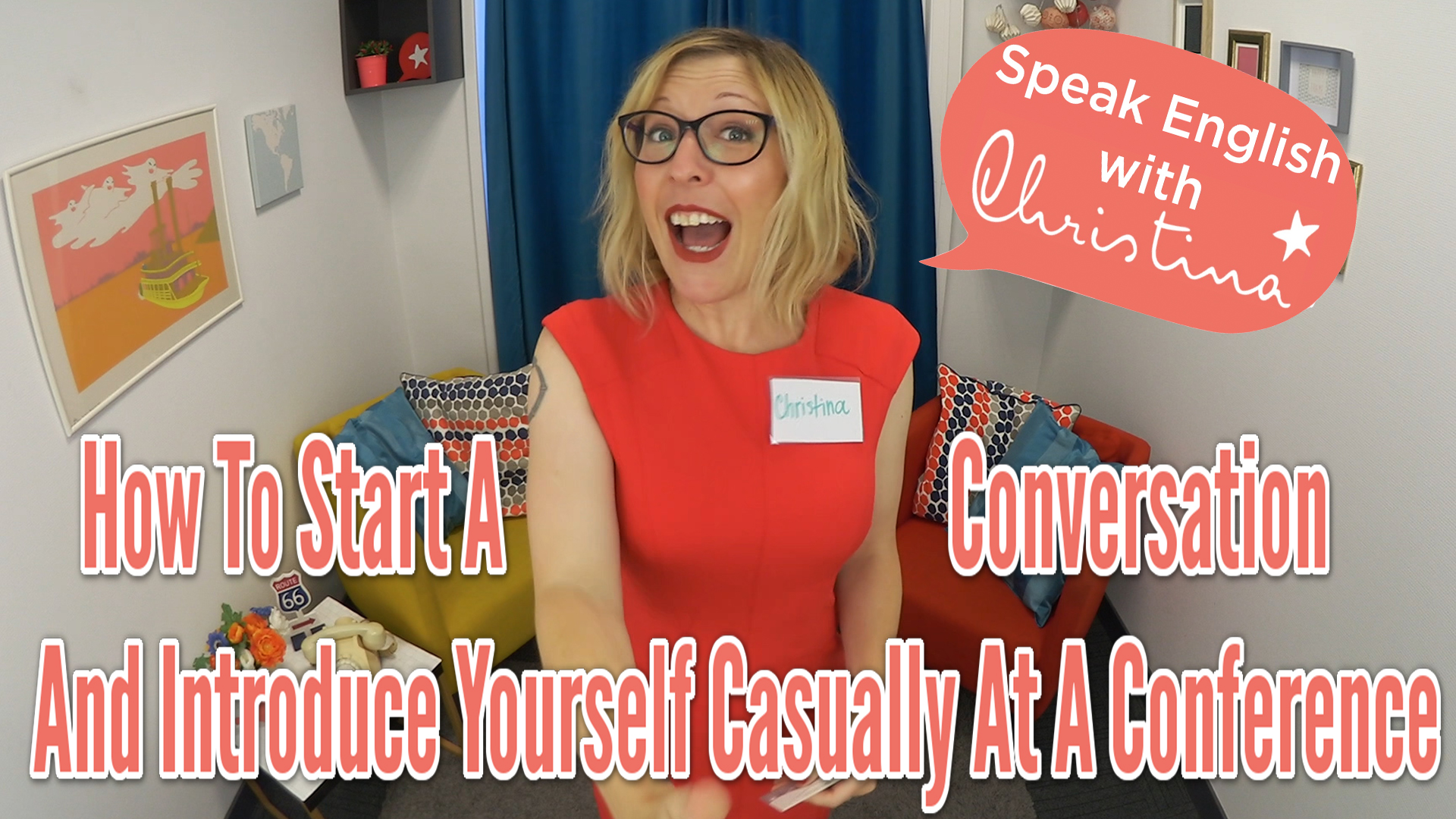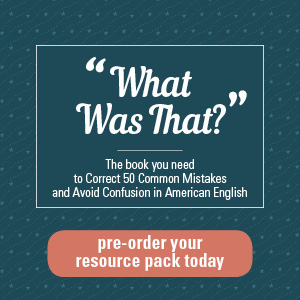
Conferences and trade shows are a fantastic way to create new business opportunities for yourself.
Often attending a conference can cost money. Plus, you take time out of your day to attend. It’s important that you make your time at a conference worthwhile.
One of the ways to do so is to have a plan on how you will introduce yourself at the conference. It should sound casual, yet professional. Brief, yet give your listener a good idea of who you are and what you do.
Sounds like a lot of pressure? Fear not! In this episode, we’ll discuss how to design the perfect – and casual – introduction you can use for all your future conferences.
If you’re attending a conference, you want to make a good first impression, and your introduction is the place to do that.
How much should you say, how can you build up a natural get-to-know-you conversation? What questions can you ask, or not? What if you feel shy? How can you feel more confident speaking English?
All of these are important aspects of good social skills in English.
And that’s why I’m creating a new course to help you master social situations and everyday conversations in your professional life.
It teaches you how to socialize with confidence, and build up those important personal and professional relationships, get techniques to make you a good conversationalist, as well as understand cultural differences on a deeper level.
If you’re ready to network like a pro and improve your small talk skills for your next conference, you’ll love this course!
In as little as 20 minutes per day, you can feel confident in American English at your next conference and other social situations!
Keep it Brief
When introducing yourself, you want to keep your introduction short. Just a sentence or two is perfect. Here’s the tricky part – be brief, but include enough details to spark curiosity in your listener.
“Hi, how are ya. My name’s Christina and I’m here to make some deals. Here’s a card. Are you interested in buying my services? Give me a call. Whoa, gotta go!”
Brief? Yes.
Friendly and casual? Not so much.
After introducing yourself, your goal is for the listener to be curious about you and ask questions. Your introduction shouldn’t be a monologue where you tell your life story!
“Hi my name’s Christina. I’m 38 years old, I don’t have any kids, but I have a cat. And I’m an English coach and teacher, with my own company. I’m from the USA, but….”
Does this sound like you? Well, at least we can improve your introduction together, I guess that’s the good news!
Think of your introduction like a game of tennis with the other person.. You say something short, they say something short. You take turns passing the conversation ball back and forth to each other.
This is what makes good conversation, but it’s true that sometimes you need practice speaking English to feel comfortable doing it!
Give information about yourself, but ask about the other person too. This will open up the introduction to a more authentic conversation, rather than a high-pressured pitch about you and your company.
Bond over what you have in common
People bond through shared experiences. A great way to introduce yourself is to reference your interest in the conference.
Why are you there? What is it about this conference gets you really excited? Is it a speaker you’ve been looking forward to hearing?
This reminds your listener that they also share your enthusiasm in the event. This can set the foundation for a lively and mutually beneficial conversation. Some things that you can say:
- “This is my 3rd time at the CES. How about you?”
- “So what are you looking to get out of this conference?”
- “So what talks are you planning to attend? Was there anything in the program that caught your eye?”
- “Did you see that Pat Flynn is doing a talk? I love his podcast! Have you ever heard of him?”
Who do you serve?
So far I’ve described a couple of guidelines to consider that can help may your introduction sound more authentic and casual.
Let’s dive into a real-world example. Instead of introducing yourself, your job title, and your company, focus instead on who you serve.
What does that mean? Well, the people you serve are those individuals who your company helps the most. Your customers.
If you can incorporate a story centered around who you serve, all the better. This is likely more interesting to your listener than your job title.
For example, if you’re an engineer that focuses on ergonomic design, you might say:
“You know how elderly people always struggle to open jars? Well, I make their life easier! My job is to design everyday products for the elderly. I’m always looking for ways to improve things like can openers, bottle openers, scissors, so they’re easier to grip and use. Grandmas love me. “
Tell a story
Everybody loves a good story, and you can give some very specific details about your work by telling a relatable story.
For example, if someone asks “What do you do?”, or “What are you working on right now?”, don’t just describe your latest project… tell a story about it!
Let’s take the earlier example, the design engineer that grandmas love.
They might say:
“Right now, I’m working with Black and Decker to create new line of age-friendly kitchen utensils. We started with can-openers, and that was a hit. Then we moved on to vegetable peelers. We weren’t sure that would work but the company got a 10% boost in sales… Thanks to a thing that your grandma can use to peel carrots! Crazy, right? No, but what I love about this is that I get to help more seniors enjoy their independence longer. It’s a nice feeling.”
While you may be at the conference to make sales, ultimately your goal is about building relationships because many sales happen over time, after building a solid relationship.
So keep your introductions short, yet distinctive to inspire curiosity. Encourage your listener to ask questions. Be sure to connect over the shared experience of the conference.
And finally, talk more about who you serve rather than superficial details such as job titles that may bore your listeners, or sound like you’re bragging because you have a fancy job title, Mr. Chief Inspiration Officer.
With these tips, you are in a good position to start an interesting conversation, make a good impression and lasting contacts at your next conference.
What about you?
Do you have any tips on how to design a brilliant introduction at a conference? Share your tips in the comments!
And if you’ve been a student of American English for years now and still feel awkward making small talk, check out my new course designed to help you master social situations and everyday conversations in your professional life.
Thank you for learning with Speak English with Christina, and I’ll see you next time!
More good stuff...
Click the image to learn more








Thanks Christina, that’s really awesome. Now I know that I have a perfect teacher, good day!
Thanks Christina, that’s really awesome. Now I know that I have a perfect teacher, good day!
Ahmad Alfawaz – Jordan
Thanks Ahmad, and I don’t know if I’m the perfect teacher, but I hope to be a very good one! 🙂